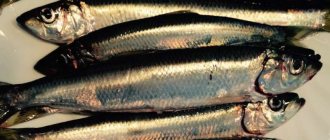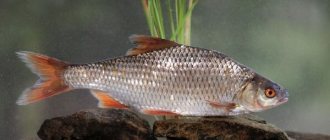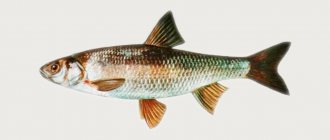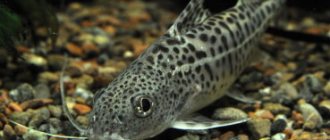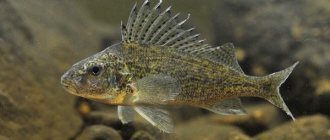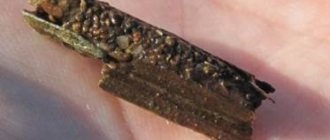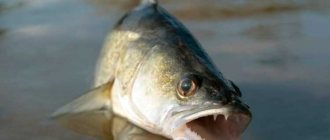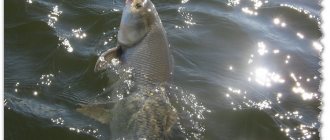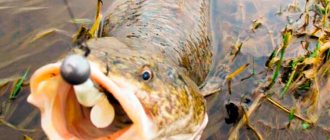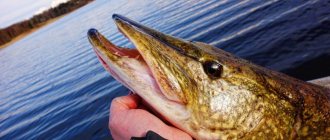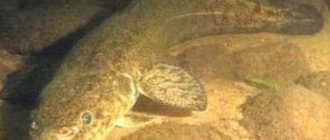HABITAT, REPRODUCTION AND NUTRITION OF SHRIMP
Shrimp habitat
Did you know that shrimp play an important role
in the ecosystem of the seas and oceans? These small creatures clean the bottom of reservoirs from various tubifex worms, fish and aquatic insects. In search of food, the marine inhabitant leads a fairly active lifestyle, constantly moving through bodies of water. Small cleaners cleanse the body of dead brethren and small algae, sometimes attacking large fish, but only sleeping or sick ones.
Of course, every species of shrimp lives
in different places.
Warm-water ones
, for example, live only in the southern oceans and seas, and there are about a hundred species of them.
Cold-water ones
are found in the Baltic, North Sea, Barents Sea, near the coast of Canada and Greenland.
By the way, this is one of the most common types of shrimp. You probably already realized that saltwater
mollusks are inhabitants of salty seas and oceans.
Freshwater ones
live in Russia, Australia, and the countries of South and South-East Asia.
Chilean shrimp
inhabit the South American coasts, the Black, Baltic and Mediterranean Seas, and our beloved
king prawns
inhabit the Atlantic Ocean.
What do shrimp eat?
The basis of the mollusk's diet
is organic matter and endangered aquatic plants.
Among plants, preference is given to succulent varieties, such as ceratopteris. These creatures resemble scavengers who will not disdain to feast on dead shellfish and even young fish. Shrimp
have organs of touch and smell that perfectly help in finding food - these are kind of antennas on their heads.
Residents closer to the equator even dig up the soil in search, running around the perimeter until they stumble upon food. As soon as the mollusk
has found what it was looking for, it immediately and greedily pounces on the food.
And only blind individuals of the Black Sea feed on
silt with their mandibles (jaws), and cold-water ones feed on pure plankton.
At home, we can add to the diet
animal dandelion and clover leaves, cucumbers, boiled carrots, zucchini, walnuts, chestnuts, cherries.
Shrimp breeding
As soon as the female is ready to lay eggs, she secretes a yellow-green mass with a specific smell, to which the males flock like bees to honey. Once the couple has chosen each other, they begin to mate
, which lasts no more than a minute. One female can lay 20-30 eggs, which develop from 10 to 30 days, depending on the environment. During the moment of formation, the shrimp in the caviar changes from 9 to 12 times! First, the legs are formed, and only then the head with all the organs located there. About 10% of the young animals die from predators, but in the aquarium you will be able to save 30%. And all because they are not able to get food, eating only the food they get.
Reminder on catching decapod crustaceans
You can catch shellfish from any place convenient for you - from a boat, from a pier, from the shore, the main condition is that the radius of your net is equal to the depth of the place where you are fishing. Give the net time to sink to the bottom and begin to pull it out with a rope.
When you pull the net, the rope will tighten, taking the shrimp with it. Pull it out and keep in mind that in addition to shrimp, you will also find some seafood in the form of dirt, sand and silt.
In the absence of a trawl, net or mesh, you can use basic gauze, which is sold at the pharmacy.
Fold it in several layers, tie some weight to two ends, and lower it to the bottom, near the shore. Walk parallel to the shore and drag your new “net” along with you for several tens of meters. Then take it out and enjoy your catch.
Where and when to fish
To achieve more or less serious success, you need to go for shrimp at night or in the evening. Many people advise going fishing early in the morning. But it must be so early that it is not yet dawn.
Choose a location based on the type of inlet or where there is a sharp narrowing of the channel.
A very good catch can be caught in the channel connecting the sea and the estuary.
They cluster near pier walls and supports, concrete structures, breakwaters, near rocks, and even near the side of a ship. You can also find a lot of them in algae thickets.
The most effective and cheapest way to use bait is a bright flashlight.
At night, they illuminate the water column. The modern market offers special flashlights with a sealed housing. They can be used underwater. The crustaceans literally come running towards the light. If you decide to fish with a trawl, you can put chicken giblets, fish, and meat in it.
The opinions of fishermen in this regard differ slightly. Some argue that the bait should be a little rotten, others - that the shrimp is not cancer, and the result will be much better if the meat or fish is fresh.
Another subtlety is low tides.
If you know the time of their onset, you can significantly improve the result by looking for animals under stones and near rocks. They hide there waiting for the next tide.
Fishing with a net
The law allows the use of a net with a diameter of up to 70 cm.
Its handle should be quite long and strong. Illuminated by a lantern, it is driven along walls, supports, structures, near the algae growth line or near the ship. Of course, it’s impossible to catch a lot like this, but “for yourself” it’s quite enough. In addition, the sea will give you its other “bounties” - there will definitely be silt, algae, and sand in the net.
If you have a boat at your disposal, you can try hunting from it. The general rules are the same, but it is advisable to choose the appropriate net.
Trawling
Trawl
- This is a device for catching not only shrimp, but also fish. It is based on a metal circle or oval, to which a fine-mesh mesh in the form of a bag is attached around its circumference. The length of the bag can reach four meters. Having entered the water, the trawl is pulled along the bottom, abundantly overgrown with algae.
For this purpose, ropes are attached to the metal frame. Very often the trawl is tied to a boat. As an option, you can install it in the place where the shrimp settles, after placing bait in it.
It is very productive to install this device in narrow channels. Then all that remains is to monitor the direction of the current and turn it around in time.
The net is mainly used when fishing from a boat. It is lowered to the bottom with the help of sinkers, and pulled out by a rope specially provided for this purpose. Only when choosing a fishing location should you take into account that the depth should not exceed the radius of the net.
There are other ways to catch these crustaceans.
For example, you can tie a reed into a medium-sized bundle, put it inside the bait and lower it to the bottom. After some time, all that remains is to remove the trap with all its contents. True, this method is considered poaching, and using it you can get into trouble.
In Belgium, a very old method of catching shrimp on horseback is used to attract tourists. At one time, they even bred a special breed for this purpose. Of course, this is more a good way to have fun than to hunt, but this does not make it lose its popularity.
Black Tiger shrimp photo
Black tiger shrimp is a product of long-term selection. For a long time, breeders crossed with each other individuals of ordinary tiger shrimp, with the darkest stripes. In the end, the experiments gave a positive result. The black color gradually spread over the entire body area of the resulting offspring. This is how a new type of aquarium shrimp arose.
During the molting period - this happens when the shrimp has grown and the shell becomes small; the shrimp sheds its shell. After molting, the color of the shrimp is lost for several days.
What does a black tiger shrimp look like?
The black tiger shrimp is a species of tiger shrimp that is distinguished by black stripes along its body. In the black tiger shrimp, these stripes merge into a bright black color, from which it gets its name. There are two types of black tiger shrimp, they differ only in eye color. One of them has orange eyes, the other black. Orange-eyed individuals are valued much higher than their black-eyed counterparts.
The sizes of this shrimp vary greatly. In amateur aquariums, the body length of males is on average 2.5 centimeters. Females are up to 3 centimeters long. A completely different picture emerges on special farms where black tiger shrimp are raised for fattening. Here, males reach a length of 25 centimeters, and females - a maximum of 30 centimeters. The weight of females is also significantly greater - from 200 to 320 grams, versus 100-170 for males.
Table of basic parameters of maintenance, care and nutrition:
| What should be the volume of an aquarium for an aquarium shrimp? | from 12 liters. For comfort you need an aquarium of 20 liters or more |
| What should be the temperature in the aquarium? | from +17-23 °C |
| What pH should be in the aquarium? | from 6.5-7.2 pH |
| What should be the hardness of the water in the aquarium? | from 2-10° dkH |
| What should be the substrate for an aquarium? | soil 3-4 mm in size with an abundance of greenery, especially mosses |
| What kind of lighting should be in the aquarium? | moderate |
| What should be the movement of water in the aquarium? | moderate |
| Aquarium Shrimp Size | size of females up to 3 cm, males up to 2.5 cm |
| What does aquarium shrimp eat? | eats dry aquarium food for shrimp or fish |
| Who is compatible with in an aquarium? | get along with small non-aggressive fish species |
| Lifespan of an aquarium shrimp | up to 1.5-2 years |
Description and features
Our heroine's favorite food is pollock and cod. Its meat contains many useful microelements and omega-3 acids. And unlike other crustaceans, this shrimp never feeds on carrion, eating only fresh food. Marine fish are well aware that such meat has excellent taste. In terms of the presence of nutrients in it, it is far ahead of the meat of Mediterranean shrimp.
It is called angular-tailed due to the fact that the tail is at an angle to the body. The cephalothorax is much shorter than the abdomen. She looks elegant. A young shrimp has a light pink, translucent color, with thin lobar red stripes on its carapace.
In water, like many shrimp, it can change color slightly, from a grayish tint closer to the bottom to a slightly greenish tint near the algae. At the same time it remains translucent. This is an excellent disguise. With age, it can acquire the shade that is more advantageous in its habitat, and the color is also formed due to the food consumed. Most often, it is a gray-greenish color.
Even though it is a decapod, it often has more legs. Five pairs of thoracic limbs are used for movement, three pairs of head limbs are used for protection and hunting, and several pairs of caudal legs and the tail itself are used for swimming. Males use the first pair of cephalic legs for reproduction.
The size of the angletail shrimp depends on its age. The first year and a half they are 4-5 cm, after a year - 7.5 cm, and at 3.5 years - 8-9 cm. By this time, her weight reaches 8 grams. There are individuals 10-11 cm long. Their caviar is dark blue.
Their most amazing feature is the ability to change gender. They are all born males. And after three years, some of them regenerate into females. These species are called protandric hermaphrodites.
The angletail shrimp in the photo can demonstrate 7 different images. This is how many stages of development the larva goes through before reaching adulthood. Growing up, it changes not only its gender, but also its habitat, layer by layer rising to the surface of the sea. True, during the daytime she tries to stay closer to the bottom of the reservoir, it is safer there.
Methods for hooking shrimp
The mounting method depends on the following factors:
- Condition of the mollusk (live, frozen).
- The type of fish intended for fishing.
Method 1 “By the head”
If the tackle is equipped with a hook with a long shank, then it is better to take uncleaned bait, which they begin to attach from the bottom of the head according to the “pulling stockings” principle. The point of the hook should come out in the middle of the peritoneum. This method of baiting has successfully proven itself when fishing on the seabed.
Advice: you should bait it carefully, without touching the black spot on the shrimp, as this will kill it and, like bait, it will lose its swimming ability and will not become interesting to the fish.
Method 2 “For the torn off tail section”
First you need to tear off the tail so that from the place of separation it begins to release an attractive smell for fish. Then thread the hook through the rest of the tail. This method is suitable for long casts.
Method 3 “By the tail”
To ensure the bait remains stationary, anglers hook it onto the hook at the very tip of the tail. This method of mounting is suitable when the seabed is uneven, when when guiding it maneuvers between stones and other algal barriers.
Method 4 “Through the shell”
The method is preferable when fishing by drifting or using float equipment. The hook should enter the shell of the shrimp when it is positioned horizontally, so as not to touch the dark spots located on the head.
Method 5 “Under the chin”
To ensure a longer cast, the shrimp should be threaded under its chin, so that the point of the hook penetrates through the central part of the head (shell) between the important organs. The disadvantage is that with this method of planting, the shrimp quickly die.
Method 6 “Eight on hook No. 5-3”
The shrimp is pierced through, then turned over and a through piercing is made at a distance of no more than 5 mm. Repeat such “stitches” several times along the shrimp’s body. This method of threading on a hook is good because the mollusk, about 8 cm long, has many strong veins in its meat, which interfere with the strength of threading and holding on the hook. In order for the meat to sit well on the hook, it is wound in a figure eight. This type of bait attachment is suitable when fishing with float or bottom tackle.
Methods of catching shrimp.
As a result of centuries-old practice of catching sea shrimp, fishermen have developed three main areas of hunting, including:
- use of a trawl. This method is considered a professional way of fishing for crustaceans, and without certain knowledge and skills, a beginner should not really take on this technique.
- using networks. This method is mostly used in industrial fishing.
- by means of a net. And this is the simplest and most accessible method for amateur fishermen, which is recommended for novice fishermen.
Trawl fishing
Trawling for catching shrimp is based on the use of a kind of large net called a trawl. Its design is not difficult to form - it is a semicircular or quadrangular frame to which a mesh of metal wire or plastic is attached. The length of the trawl used for catching shrimp is about 3-4 m.
Shrimp trawl
In practice, the device is used as follows:
- lower the trawl to the bottom of the bay by ropes;
- attach ropes to a boat or boat and pull the devices at low speed along a promising trajectory;
- When sinking, the trawl collects shrimp in the bottom area.
It is most effective to use the trawling technique in the coastal zone, away from beaches and any other crowded places. It is recommended to use the trawl near an overgrown bottom. The only drawback of this method is the appearance of additional difficulties due to the risk of the net getting caught in vegetation.
Fishing with traps
Fishing in this way requires the angler to have a motor boat at his disposal. Otherwise, the fisherman will not be able to implement the fishing method.
Shrimp traps
The hunt begins in the following order:
- complete set of nets in a fishing store with the declared cell;
- searching for a promising location, and the choice is usually left on the coastal strip of the sea or a narrow channel;
- casting gear and securing nets with installation ropes;
- collection of caught seafood, carried out by swimming along the installation of gear at low speed;
- re-installation of nets at another promising point with complete removal of gear with production from the water;
- reinstallation of networks.
Industrial fishing organization ensures the highest efficiency and quality of products
It is important to note that for recreational fishing the method is poaching. The advantages of the technique are that the nets are used regardless of the depth, including deep ones, therefore there are features of the deep-sea implementation of the fishing method:
- Despite the high cost and technical complexity of deep fishing, the method provides an impressive catch. Hard-to-reach deep places abound with shrimp colonies;
- The method ensures guaranteed quality of the caught products, since the heat treatment of the fresh catch is carried out directly on the vessel. After all, shrimp can be stored without processing for no more than two hours, after which they begin to deteriorate;
- The most profitable method of fishing is with huge trawls. They are secured behind the fishing vessel and slowly dragged along the bottom. An additional advantage is a good by-catch of fish. A significant drawback of the technique is the disruption of the natural structure of the bottom, since trawls practically plow the bottom, leaving behind a deep trail;
- After sorting, all catch that is not subjected to heat treatment is sent for freezing.
Fishing with a net
In principle, an accessible and cheap way of hunting is to use a fishing net with a minimum rim radius of 40 cm. The net is assembled from a fine mesh, installing a powerful handle that can withstand high loads of water resistance without bending.
Alternative shrimp fishing methods
Shrimp fishing gear is of the following types:
- take a landing net with a diameter of about one meter with a long handle of at least 2.5 meters;
- the factory mesh is replaced with curtain tulle;
- Subsequently, fishing is carried out close to the shore or near surface structures.
Let's imagine an example of an ancient method of catching shrimp, where the tackle is assembled from scrap material, which can be used in extreme conditions or on vacation without having specialized fishing equipment:
- we cut branches from the bushes and tie them into an improvised bundle-basket;
- We place the device in the water, having previously secured the load to the branches;
- crustaceans take this weaving for a natural shelter and gather inside the basket on their own, and the fisherman can only then extract the prey.
When planning to go fishing for shrimp, you should know that fishing in winter is impossible, since the crustaceans hibernate, retreating to the depths, and do not show any activity.
Ideal time to catch shrimp
In general, you can always catch shrimp: day and night, at any time of the year. However, you need to know a few rules:
- in summer, during the spawning period (June 1 - August 31), it is prohibited to catch shrimp, especially in industrial quantities; you can use a small net (diameter up to 70 cm) and up to 1 kg of catch;
- The fishing location, gear and time of day are interconnected;
- Freshly caught shrimp can quickly spoil in the heat - you need to think about where to store them.
Important!
catching shrimp in violation of the law is punishable by a fine.
It is believed that most shrimp can be caught at night; a flashlight is used for this - the crustaceans are drawn to the light and fall into the net. Most often, fishermen take a trawl - a special tackle - and go out to sea in a boat, where they lower the anchor at a depth of several meters and begin fishing. Fishing in this case promises to be excellent!Shrimp can be caught in the morning and during the day. A fisherman, either a visitor to the Odessa region on vacation, or a local resident without special skills in catching fish and crayfish, picks up a net with a long handle and goes into the water about waist-deep. With light movements, the catcher methodically goes around the bottom with a net, scooping up and draining water.
You can use a large box on ropes. If you put bait in it (preferably a piece of stale meat), the shrimp will stuff themselves into the net.
Interesting!
Lazy fishermen simply lower the trap with bait into the water and wait for a while, a catch is guaranteed!
How to catch a shrimp - the main tricks for successful fishing
How to catch shrimp? You should go fishing in the evening or even at night - it is during these hours that crustaceans are most active. Some fishermen set net traps for shrimp in advance, which allows them to go in the morning for a delicious “harvest.” Habitat – from 50 cm to one and a half meters; the presence of a large number of aquatic plants is mandatory, because this is where crustaceans like to hide.
Photo 3. Good catch.
Fishing is carried out in different ways, but most often a net or bottom trawl for shrimp is used. The mesh of such gear should be fine, otherwise it will be difficult to catch small representatives of the crustacean family with a net; they will simply escape through the large meshes. It is convenient to catch shrimp if the tackle has a long handle and a large circle diameter, this will allow the fisherman to put in less effort and simplify the process.
Shrimp prefer to live in places with a lot of algae. The use of a trawl in such places and a little knowledge about the secrets of successful fishing will delight you with a considerable catch. You only need to pull the trawl against the current; if it changes, turn around and move on. During the daytime, the number of delicious specimens may not please you, but if you arm yourself with a powerful flashlight and go fishing at night, the result will certainly exceed all expectations.
The use of a net is simpler - armed with simple gear, you need to avoid pitfalls by moving a homemade or purchased device around them. Here, too, you can use a lantern, attracting curious sea inhabitants with its bright light.
Important! Black Sea fishermen have come up with an interesting way of fishing. In the morning they arm themselves with several nets, each of which contains a piece of meat (always with a “smell”)
It is enough to use a boat and lower a net into the water near the rocky shores, so that after half an hour you can retrieve it overflowing with a delicious product.
We should not forget about the restrictions on catching delicious crustaceans. During spawning, which lasts from the first day of summer to the last, it is better not to tempt fate and give up this exciting activity. Before you go fishing, it is recommended that you familiarize yourself with the restrictions, because in some reservoirs it is prohibited to catch more than 2-5 kg of shrimp.
Regardless of professionalism, catching shrimp is a pleasant and unforgettable activity, because what could be better than fresh air, gentle sun rays and warm water? Even if we are not pleased with the catch, let’s just enjoy the process itself, because this is precisely the beauty of fishing.
Shrimp fishing spots
You can catch shrimp along the entire Black Sea coast of the Odessa region. Most often it will be the Black Sea crangon shrimp, which loves a sandy or muddy bottom.
Many people prefer to catch Black Sea shrimp in the resort villages of the Odessa region, starting from Sergeevka and ending with Koblevo.
Firstly, it is convenient to get to such places by public transport; there are good roads. Secondly, developed infrastructure - many hotels and tourist centers offer to organize shrimp fishing, provide equipment and cook services, or allow you to cook shrimp on site. Thirdly, it’s nice to combine a holiday at a resort and fishing, especially if you spend a weekend at sea with your family.
Particularly noteworthy are the places where there are estuaries - Koblevo, Zatoka, Karolino-Bugaz, Sergeevka. Shrimp fishing in the estuary is different from sea fishing, but also interesting. The only thing worth paying attention to is the degree of salinity of the water in the estuary; shrimp choose saltier water.
By the way!
If you catch shrimp with a trawl in an estuary, then periodically you need to re-throw the gear, as the current changes.
Methods and technology
The choice of fishing method also plays a huge role.
Using a trawl
A trawl is a special device that is used to catch both various types of shrimp and ordinary small fish. The trawl is a dense metal circle with a metal mesh bag connected to it. Its size varies from two to four meters.
The trawl is fixed with ropes and immersed in the water. Usually, for the convenience of fishermen, it is tied to the boat. When it moves, the trawl drags along the bottom. Shrimps fall into it, which are then taken out of the water. It is most effective to use a trawl in the coastal zone, away from crowded places. But it is worth considering that when using this fishing method in reservoirs with an overgrown bottom, the net may get caught on vegetation.
net
Often, fishermen use nets, which are also called landing nets, to catch shrimp on their own. According to the rules, their diameter should not exceed 70 centimeters. The optimal rim size is 40 cm. For fishing, you should choose a durable net with a long and very strong handle
It is important that the mesh attached to it is very fine. Otherwise, the shrimp will simply slip out of the net.
The disadvantage of this method of fishing is that sand, silt and even algae get into the net along with the desired prey. It is very convenient to catch shrimp with a net from a boat. It is best to do this in the dark.
Separately, it is worth noting the fishing method invented by Black Sea fishermen. In the morning they put fragrant meat in their nets. This bait lures prey with a rich aroma. Then the fishermen sail from the shore in boats and lower the nets into the water. Just 30-40 minutes is enough for a large number of shrimp to collect in them. Instead of meat, you can also use small fish or bread crumbs. But crustaceans bite on such bait less readily.
Network
The net is used for fishing from a boat. It's very easy to work with. It is enough to throw it into the water and wait until the sinkers sink to the bottom. You need to pull out the net with the catch using a rope attached to it. In the process, it will tighten, which means that all the shrimp will remain inside the mesh. You can throw the net several times until you have collected enough prey. But this method is quite effective, so it doesn’t take much time to catch.
Shrimp fishing methods
There are three main methods used when catching shrimp:
Trawl fishing
This device looks like a semicircle or rectangle made of metal, around the perimeter of which a fine-mesh mesh is attached, in the form of a bag, 3-4 meters long. The so-called trawl is lowered to the bottom and pulled along it using ropes attached to a metal frame. This device can be used in the coastal zone, where there is no great depth and there are no large crowds of people. Places with the presence of aquatic vegetation are selected. At the same time, an amateur fisherman goes waist-deep into the water and pulls the trawl by the ropes.
Application of a net
For this, a special fishing net with a diameter of about 0.7 m is used. The rim of the net is made of metal, to which a metal mesh is attached. The handle of the net should be long and strong. Fishing is done in the evening or at night in places where shrimp can accumulate. This could be a pier, groins, the sides of ships and other coastal elements overgrown with grass and mud. If you use a bright flashlight, you can additionally attract seafood.
Fishing with nets
Nets are used if there is a boat at the location and the equipment is as follows:
- Purchasing a network.
- Finding a suitable drop site.
- Casting tackle.
- Pulling the net using ropes.
- Place the shrimp in a special container.
- Re-throwing the net.
Fishing is carried out until the required amount of seafood is collected.
Other fishing methods
In many countries, shrimp are caught in the following way:
- Take a landing net with a diameter of 0.7-.75 m with a handle about 2.5 m long.
- The classic mesh is replaced with regular tulle fabric.
- Fishing is carried out in the coastal zone from a boat, shore or pier.
A very interesting method of shrimp fishing is practiced in Belgium. This method was used by our ancestors, but it is still used today. The fact is that horses are used for this. With the help of their nets they are thrown into the sea and pulled ashore. What is noteworthy is that for these purposes a special breed of horse was bred that is not afraid of sea water.
What kind of fish
Shrimp fish received this name because of its characteristic taste, reminiscent of the famous seafood. The individuals have a strange appearance due to their close relationship with the moray eel. Congrio has a delicate pinkish skin tone, covered with characteristic stripes. The fish feeds on shrimp and plankton.
Supplies originate from Australia and New Zealand. Today you can buy congrio in three types:
- Golden – thanks to its tender meat, it is appreciated by Asian chefs. Widely used for preparing Japanese sashimi and sushi.
- Black is the most popular type. Caught in New Zealand waters.
- Red – valued for the bright shrimp flavor of the meat. Does not have a pronounced fishy smell. Found off the southern coast of Chile, it is the most expensive of all species.
The fish are similar in appearance, have differences in taste and color. Gold and red ones are considered the most delicious.
Types of shrimp
All species of shrimp known to science are divided into four groups:
- Warm water;
- Cold water;
- Brackish water;
- Freshwater.
The habitat of warm-water shrimp is limited to the southern seas and oceans. They are caught not only in their natural habitat, but also cultivated in artificial conditions. Science knows more than a hundred species of warm-water shrimp. Examples of such shellfish are black tiger and white tiger shrimp.
The photo shows a white tiger shrimp
Cold-water shrimp are the most common of the known subspecies. Their habitat is wide: they are found in the Baltic, Barents, North Seas, off the coast of Greenland and Canada.
When describing shrimp
It is worth mentioning of such individuals that their length is 10-12 cm, and their weight is 5.5-12 grams. Cold-water shrimp cannot be artificially propagated and develop only in their natural habitat.
They feed exclusively on environmentally friendly plankton, which has a positive effect on their quality. The most famous representatives of this subspecies are the northern red shrimp, northern chilim shrimp and red comb shrimp.
Pictured is chilim shrimp
Shrimp, common in the salty waters of seas and oceans, are called brackish shrimp. Thus, red king prawns
, northern white, southern pink, northern pink, serrated and other individuals.
The photo shows serrated shrimp
On the South American coasts you can find Chilean shrimp. The waters of the Black, Baltic and Mediterranean seas are rich in grassy and sandy shrimp.
The photo shows a grassy shrimp
Freshwater shrimp mainly live in the countries of Southeast and South Asia, Australia, Russia and the countries of the former Soviet Union. The length of such individuals is 10-15 centimeters and weighs from 11 to 18 grams. The most famous species are the troglocar shrimp, Palaemon superbus, Macrobachium rosenbergii.
Where do they live?
Decapod crustaceans live in almost all the seas of the world, and some have mastered fresh waters for their residence.
The size of some adult shrimp reaches three centimeters, but there are some that reach seven centimeters. A large number of shrimp inhabit the shores of Japan, China, India, and Southeast Asia. They are warm-blooded and cold-blooded, the first individuals are always large in size and are caught in the waters of Thailand, Brazil, and China. Cold-blooded shrimp are smaller in size, live in the northern seas, and are considered to be tastier than warm-blooded shrimp.
The most convenient place for decapods to breed is the Pacific Ocean , here they have all the conditions for life, which is why the islands of Somalia, Latin America, Brazil, and Ecuador are famous for their large and tasty shrimp.
There is deep-sea mining here and it is carried out on an industrial scale. Here, the prey is immediately heat-treated and frozen; it is believed that the quality of these marine animals is higher.
Belgium is famous for its old method of catching crustaceans. They attract tourists with nets, baskets and horses.
And in Russia, shrimp can be caught in the Far East; here the shores delight with almost a hundred species of shrimp. Two species live in the Black Sea, one lives on sandy soil, on the bottom, where there are small pebbles, the second on rocky areas, near rocky shores.
Shrimp caught in the Sea of Azov is considered one of the most delicious. The Baltic Sea, the North Sea, the waters of Transcaucasia and even the Amur River are rich in this pure protein, which is small in size, but tasty.
It is necessary to catch shrimp at night or in the evening; you can set traps in advance so that the “harvest” can be collected in the morning. The habitat of these crustaceans is at a depth of six hundred centimeters to one and a half meters, where there is a large accumulation of algae so that it can hide from danger.
Be sure to have information about the ebb and flow of your reservoir. The most convenient time for fishing is low tide, evening or night hours.
When, where and how to catch shrimp?
A shrimp is a crustacean animal. This is a popular product at the moment. Industrial fishing allows many companies that engage in this work to generate income.
The demand for the product is due to its excellent digestibility and the presence of many vitamins and microelements. And thanks to developed technologies and infrastructure, the buyer receives a high-quality product.
Read more about catching shrimp in the article.
Benefit
Animal meat contains a lot of protein, which is easily digestible and contains many essential amino acids. The latter cannot be produced in the body; they come only with food. This product contains much more iodine than beef, so it is in demand in regions with iodine deficiency.
A rich set of mineral elements and vitamins affects almost all organs and systems, including skin, hair, and nails. This is an indispensable remedy for the prevention of heart and vascular diseases.
Habitats
Where do they catch shrimp? There are several habitats of these creatures:
- There is a tiger species in the Pacific Ocean. Closer to the equator, animals are larger and tastier. A wide variety of species are found in warm waters. There are fewer of them closer to the poles.
- These animals are found in Kenya, Brazil, Ecuador, and Somalia. In these countries, the water usually has a temperature of +25 to +30 degrees, which is favorable for the development of these inhabitants. Their dimensions can be 30 cm. In South America, shrimp are farmed, resulting in a high-quality product.
- A temperature drop to +15 degrees causes the death of marine life. Warm water works in a similar way - +35.
- Small shrimp, 2.5-10 cm in size, live in the Barents, Baltic, and North Seas. Animals caught off the coast of Canada and Greenland are of great value.
- There are many marine inhabitants in the Mediterranean, Black, and Azov Seas.
- Freshwater animals are found in the Amur and cave reservoirs of Transcaucasia.
- There are crustaceans in the fresh waters of the Far East. The population is relict because it has lost contact with other similar species due to geological changes in the land. They live at +15 degrees, but when the temperature drops to 10 degrees, the larvae die. Adults cannot tolerate drops to 0 degrees.
If animals live at temperatures that differ from optimal temperatures, they grow more slowly and also stop reproducing. In this climate they exist for up to 3 months. Shrimp are not very sensitive to salt water, since even those that live in fresh water are of marine origin.
Industrial types
Although several thousand crustaceans live in nature, there is no commercial interest in all of them. In Russia, the most popular shrimp is the cold-water red beer shrimp. It is small in size and sweet in taste. It has subspecies - red comb and northern chilim. Game and king prawns are in demand.
The southern pink shrimp lives off the coast of Africa. Captain's is found in artificial reservoirs in China and Korea. In the Black and Mediterranean Seas there is sand shrimp, which is fished by Germany. Grassy Black Sea shrimp is caught. US restaurants serve spotted deep-sea creatures, as well as white and pink ones. There is a Chilean species, common on the coast of Chile.
Where and when to fish?
When can you catch shrimp? To get a rich catch, you need to go for shrimp at night or in the evening. Many people recommend going fishing early in the morning, but this should be before dawn. The location must be chosen according to the type of inlet or where there is an intense narrowing of the channel. The catch can be on the channel that connects the sea and the estuary.
The inhabitants crowd around the walls and supports of the pier, concrete structures, breakwaters, rocks, and the side of the ship. There are also a lot of them in algae thickets. A bright flashlight can serve as bait. During the dark period, they illuminate the water column.
Lanterns with sealed housings are sold specifically for this purpose. These products are suitable for use underwater. The crustaceans quickly come running towards the light. How to catch shrimp? Several proven methods are used for this.
Some believe that the bait should be somewhat dull, while others say that it is necessary to use fresh bait. Another subtlety is considered to be low tides.
If you know about the time of their onset, you will be able to improve your fishing results. How to catch shrimp in Primorye? All proven methods are used for this. Let's look at them in detail.
How to catch shrimp?
Crustaceans are valuable, nutritious and tasty seafood. They contain many vitamins, acids and minerals (calcium, magnesium, sodium, iron, iodine, etc.). The beneficial substances they contain help stabilize hormonal levels in the human body and increase its immunity. The disadvantage of shrimp meat is its high cholesterol content.
For their taste, they are valued among gourmets and fishing enthusiasts. Therefore, shrimp fishing is carried out both on an industrial scale and by fishing enthusiasts. The latter prefer not only to eat them, but to sell them to local cafes and restaurants.
Shrimp fishing is most often carried out in the evening or at night. It is best to choose areas in the form of a backwater for this, because In places where the reservoir narrows, it is convenient to install trawls or traps. Caught crustaceans can be consumed not only for food, but also used as bait or as bait for fishing.
Many fishermen fish not only in the coastal zone, but also from a boat. And the most ancient method of shrimp fishing was popular in Belgium and was carried out with the help of specially trained horses that pulled shrimp nets.
Habitats
To catch large quantities of crustaceans, you need to know exactly where the shrimp live. Their favorite areas are the bottom layers at a depth of 0.6 to 1.5 m, where there are accumulations of seaweed. If there are low tides and high tides in the selected location, then the exact time of their occurrence should be known, because Low tide hours are considered the most convenient for fishing.
Equipment and methods of fishing
Basic tools and methods of shrimp fishing:
Homemade traps are widely used for catching Black Sea shrimp. To make a shrimp tank you will need the following materials:
First, a piece of mesh is taken and stitched into the shape of a large pipe. Another piece measuring 15x30 cm is similarly sewn along the length to enter the trap. A piece of thin wire is passed through it to create a ring-shaped entrance. The edges of the wire must be twisted and secured.
Then the galvanized wire is threaded into the cells in the form of a spiral, which will hold the trap with rings. After 2-3 turns inside and 1 outside, its ends must be fixed at the first and last rings. Then you get a circle, then both edges of the large pipe need to be sewn to the wire rings using twine.
At the end, between the middle rings, you should tie the bait with a rope. The float is also attached to the middle of the shrimp tank. Black Sea fishermen often use slightly rotten meat as bait.
The simplest shrimp trap is made from a plastic bottle (float), a weight and a plant called a tumbleweed or broom. Several bushes need to be tied together, a sinker attached to the bottom, and a float on top. The trap should be lowered to a depth of 1 m overnight. Shrimps climb en masse on wet plants. In the morning, all that remains is to shake them out into a nearby bucket. However, this old-fashioned method is considered poaching and may be subject to a fine.
Mechanical removal
Everything is simple here, armed with a net or just with hands, we begin to methodically catch shrimp. Caught individuals can be given away, disposed of, or even tried to be sold. The method is quite complex and time-consuming, especially with a population of half a hundred. A shrimp trap will make things easier for us.
Shrimp trap
There may be various variations in making a trap, but the essence is the same. We have bait and a vessel in which the shrimp will leave the aquarium.
You can take an ordinary plastic bottle and make holes in it of such a size that shrimp can get in, but fish can’t get through. If there are no small fish in the aquarium, then you can use the neck of a bottle as a hole. We put a catfish tablet or any other bait inside the bottle and wait. You can leave the structure overnight. A similar trap can be made from a jar covered with gauze.
You can put the bait in the net and just stand nearby, wait for the krill to feast. This way we can catch krill much faster than just using our hands.
